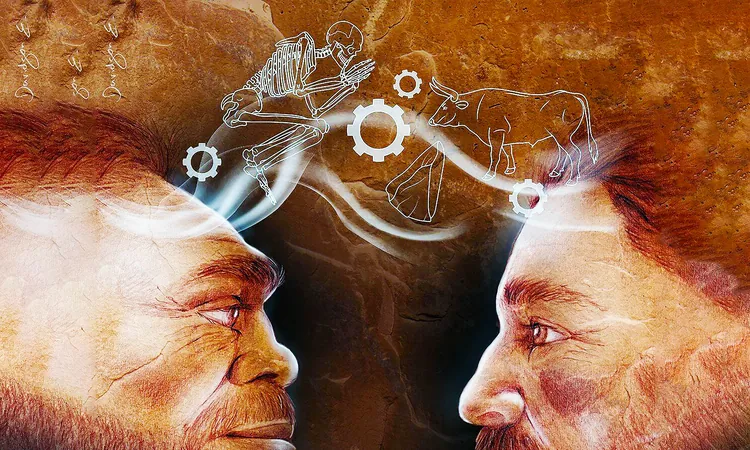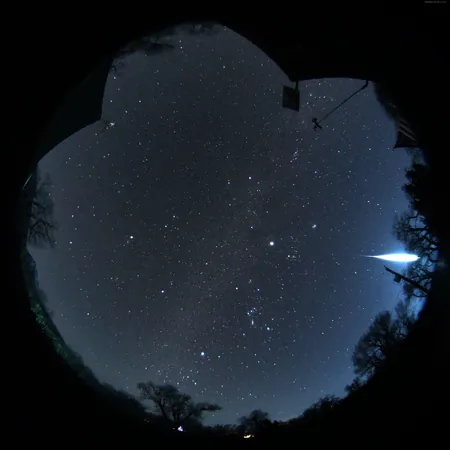
Groundbreaking Neanderthal Discovery Shakes Foundations of Human History
2025-03-29
Author: Rajesh
Groundbreaking Neanderthal Discovery Shakes Foundations of Human History
Recent findings from Tinshemet Cave in Israel have fundamentally altered our understanding of early human and Neanderthal interactions, revealing a complex tapestry of social and cultural behaviors that existed tens of thousands of years ago.
Situated in the Levant, a historic crossroads for early humans and Neanderthals, Tinshemet Cave serves as an archaeological time capsule, showcasing an incredible array of nearly complete skeletons and burial artifacts that offer insights into the lives of these ancient groups. Researchers believe that the shared customs and technologies discovered here suggest that Neanderthals and Homo sapiens were not merely neighbors, but collaborative inhabitants of the region that actively influenced one another.
In what is being heralded as the first significant examination of Middle Paleolithic human burials in half a century, the evidence collected from Tinshemet Cave indicates that both species participated in social rituals that involved intentional burial, interment of grave goods, and the use of ochre — practices that far precede previous known instances globally.
The ongoing excavations, led by prominent scientists including Prof. Yossi Zaidner and Prof. Israel Hershkovitz, aim to uncover the depth of relationships between the two human groups during the mid-Middle Paleolithic period. The research team has scrutinized aspects such as stone tool quality, hunting strategies, and social structures, offering a composite view of life during this time.
A pivotal question has emerged: Were early humans and Neanderthals in competition for resources, or did they find common ground? The answer leans more towards collaboration, with findings suggesting an active exchange of knowledge and survival strategies, ultimately leading to shared social customs.
The artifacts discovered at Tinshemet Cave, including stone tools and animal remains, indicate a collective belief in an afterlife, hinting at complex societal structures. The positioning of burial artifacts reveals a profound respect for the deceased and a shared ritualistic tradition among both Neanderthals and early humans.
The cave is now considered a potential ceremonial site, giving rise to questions about its significance in the social organization of early societies. Researchers are particularly fascinated by how geographical factors and climate changes of the mid-Paleolithic period might have enhanced survival and communication between different hominin groups.
This unprecedented archaeological narrative underscores a vision of ancient humans as socially dynamic entities, deeply interconnected through shared experiences. The ongoing work at Tinshemet Cave continues to unveil layers of our common ancestry, and with each artifact unearth, a more intricate story of early life blossoms.
As further digs progress, more discoveries are eagerly anticipated that might reveal additional burial practices, artifacts, or even symbolic engravings, which could deepen our understanding of the interpersonal complexities among early hominins in this pivotal region.
The implications of these findings extend beyond our textbooks, reshaping long-held assumptions about how Neanderthals and Homo sapiens interacted, and what that means for our understanding of human evolution itself. Indeed, we are on the brink of a historical revolution in our comprehension of the shared past of our species.


 Brasil (PT)
Brasil (PT)
 Canada (EN)
Canada (EN)
 Chile (ES)
Chile (ES)
 Česko (CS)
Česko (CS)
 대한민국 (KO)
대한민국 (KO)
 España (ES)
España (ES)
 France (FR)
France (FR)
 Hong Kong (EN)
Hong Kong (EN)
 Italia (IT)
Italia (IT)
 日本 (JA)
日本 (JA)
 Magyarország (HU)
Magyarország (HU)
 Norge (NO)
Norge (NO)
 Polska (PL)
Polska (PL)
 Schweiz (DE)
Schweiz (DE)
 Singapore (EN)
Singapore (EN)
 Sverige (SV)
Sverige (SV)
 Suomi (FI)
Suomi (FI)
 Türkiye (TR)
Türkiye (TR)
 الإمارات العربية المتحدة (AR)
الإمارات العربية المتحدة (AR)